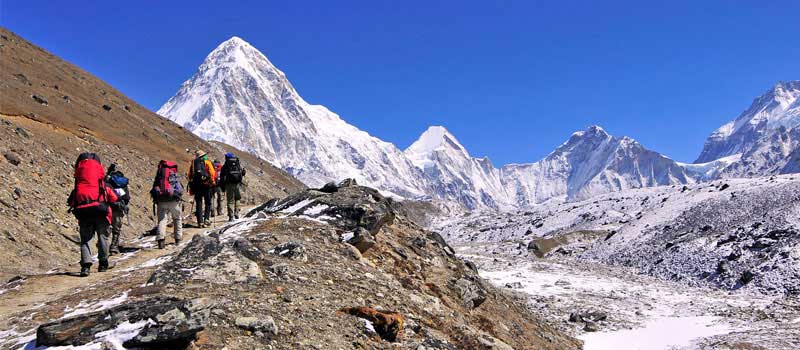How to trek responsibly in Nepal?

- 02-May-2016
- 0
When you come for trekking in Nepal you may be traversing along the Ghorepani region for a shorter trek, clambering in the Everest Base Camp among the Sherpa community, wandering in the trails of Annapurna region, or exploring the restricted Nar and Phu valley in the Mustang region. In any case, have you ever been conscious of what have you contributed to the local community and region? It’s high time you be aware of the responsibility on your part as a trekker. So what exactly is Responsible Trekking and how can you trek responsibly? Let’s find out.
Responsible Trekking
Responsible trekking, a part of responsible tourism, is basically behavior that trekkers like you exhibit during your trekking expedition. Putting it more simply, in responsible trekking you contribute positively towards keeping the environment along the trek unharmed, increasing earning of the local community, and respecting the local way of living. By following the theme of responsible trekking, you try to ensure that the expenses you make reach local hands, the environment remains fairly unharmed and you respect the local culture, tradition, and sentiments attached to it.
How can you trek responsibly?
The act of responsible trekking begins before you actually begin trekking and continues until you complete your trek. Here are some practical ways you can actually contribute to responsible trekking.
1. Leave only footprints and take only memories
You got to remember this as the basic rule in trekking. While you trek in Nepal you mostly pass through the areas where the environment is conserved and are serene. So while you trek, remember to clean all the mess you create, pack up everything you brought with you, use the trash bins to dispose of your wastes, and like. Take special care of the feces and smaller items like cigarette butts, toilet papers, wrappers, and others. Enjoy the trail and manage the litter by yourself.
2. Ensure that the spending you make goes into local hands
When you trek into the trekking areas in Nepal, remember that the communities along the trail rely heavily on tourism as their source of income. Make sure that the guide and porters you take for help belong to the community in the trekking region, the teahouses and lodges are run by the locals and the things you buy in the trekking trails are the local products. You help the locals earn their bit and receive proper compensation for the service they provide to you in many ways. Be responsible while you spend.
3. Be Culture sensitive
It happens many times that you explore the places of religious and cultural significance when you trek in trekking trails in Nepal. All the temples and most of the gompas require travelers to take off the shoes before entering the premises. You have to follow certain dos and don’ts when you are there. Ask your guide about such rules. Another thing is you have to dress by local culture. Avoid skinny clothes and revealing outfits. Interact with the locals properly.
4. Eat local
Considering the health issues of yours, if any, try tasting the cuisines in local eateries. Ask for the dishes and meals made from the locally available ingredients. You will have two benefits at a time: you will get healthy, authentic, and fresh dishes and you will also support the local community. In this way, you become more close to the local lifestyle and you get to explore the real Nepalese society, authentic and genuine food and drinks.
5. Buy local souvenirs
You take a lot of pictures to take back the memories with you right? Then take some souvenirs as well. Purchase the locally made souvenirs, most of which are unique and reflect the local culture, tradition, and skills. Be sure that the products made are not made by killing endangered wildlife or harming the environment. By doing this you are providing locals their much deserved earning.
6. Pack necessary things only
The packing light is packing-wise. Take only the necessary things in trekking. Remember that you are going to experience the wilderness and remote landscape, so you needn’t take many things. Also when you take fewer things with you, you have more flexibility while moving around and you reduce wastage as well. If necessary, buy things in the local market.
7. Do the word-of-mouth advertising
Tell others. Spread positive words about the trekking trails that you have just trekked. Tell others you meet about the positive things about the trail, the customs, and culture of the region, the ways you can help the locals and make the trail known to as many people as you can. In this way, you are helping to popularize the trekking destination and helping for sustainable tourism.
So, when you are trek




